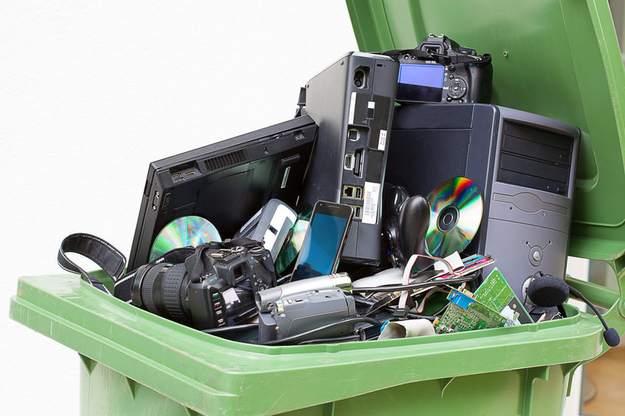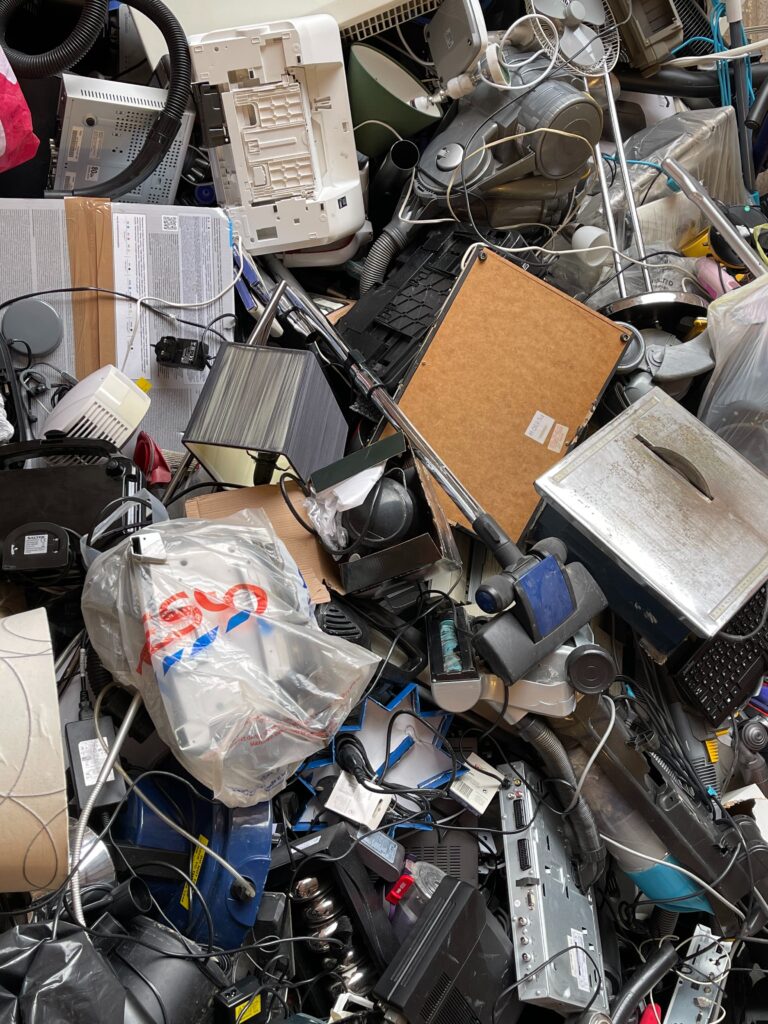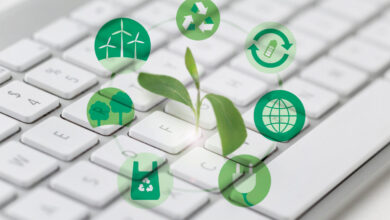How to Dispose of E-Waste Sustainably

The eco-friendly disposal methods to overcome the challenges associated with the e-waste management system.
In today’s digital age, electronic devices have become an integral part of our lives. From smartphones and laptops to televisions and refrigerators, we rely on these devices for communication, work, entertainment, and much more. However, with the rapid advancement of technology and the increasing demand for new gadgets, an alarming consequence has emerged: electronic waste, or e-waste. Globally, more than 50 million metric tons of e-waste is generated every year. The management and responsible disposal of e-waste pose significant challenges for society, necessitating immediate attention and action.
What’s in e-waste?

The expansion of electronic devices and their shortened lifespan contribute to the rapid accumulation of e-waste. E-waste contains toxic substances such as lead, mercury, cadmium, and beryllium, polluting PVC plastic, and hazardous chemicals, such as brominated flame retardants. They can contaminate soil, water sources, and the air if not properly disposed of. This poses significant risks to both human health and the environment.
Moreover, e-waste often contains valuable materials like gold, silver, copper, and palladium that can be recovered and reused. Failing to recycle and extract these precious resources leads to the unnecessary depletion of finite natural resources and exacerbates the environmental impact of electronic waste.
Responsible Disposal Practices
To address the e-waste challenge, responsible disposal practices are essential. Several initiatives have been undertaken by governments, organizations, and individuals to tackle this issue.:
Extended Producer Responsibility (EPR)
Many countries have implemented EPR programs, which hold manufacturers accountable for the entire lifecycle of their products. This includes taking responsibility for the proper disposal and recycling of electronic devices. EPR programs encourage manufacturers to design products with recycling in mind, promote eco-friendly materials, and establish collection and recycling mechanisms.
Recycling and Resource Recovery
Recycling e-waste is crucial for conserving valuable materials and minimizing environmental harm. Specialized recycling facilities can safely extract and recover valuable resources from electronic devices, preventing them from entering landfills. Recycling processes involve disassembling devices, sorting components, and extracting materials for reuse. Public awareness campaigns can also educate individuals on the importance of recycling their electronic devices.
Donations and Refurbishment
In many cases, electronic devices that are still functional can be donated or refurbished. Non-profit organizations, schools, and underprivileged communities often benefit from such initiatives. Donating or refurbishing electronics extends their lifespan, reducing the demand for new devices and mitigating the environmental impact.
Proper Waste Management Infrastructure
Governments and local authorities must establish robust waste management systems to facilitate the collection, transportation, and recycling of e-waste. This includes setting up collection centers and drop-off points where individuals can safely dispose of their unwanted electronics.
What you can do about e-waste?
- It is advisable to refrain from purchasing a new device unless it is absolutely necessary.
- Buy your device from a brand that has an EPR policy.
- Practice 3 Rs — reduce, reuse, and recycle.
- Look out for recyclers authorized by the Pollution Control Board (PCB).
- Give off e-waste to government-approved dismantlers.
- Gather e-waste at the community level or organize e-waste collection drives.
Challenges and Future Perspectives
Awareness is necessary
Lack of awareness among the common people about the hazards of improper disposal remains a significant obstacle. Many individuals are unaware of the proper channels for recycling their electronic devices or don’t know how to choose sustainable gadgets. More awareness needs to be created among consumers.
Improper practices of Recycling
Many people in developing countries earn a living by dismantling, refurbishing, repairing, and reselling discarded electronic devices. It has been found that inhaling toxic chemicals and direct contact with hazardous e-waste materials result in various health problems from kidney and liver damage to neurological disorders.
Need for global e-waste management policies
Electronic devices are often manufactured in one country, used in another, and discarded in yet another. Coordinated international efforts are necessary to address this issue comprehensively. Cooperation between governments, manufacturers, and consumers can pave the way for effective global e-waste management strategies.
Conclusion
The exponential growth of electronic devices poses a significant challenge to society in terms of e-waste management. By embracing responsible disposal practices, we can work towards a greener, healthier future and ensure that the digital revolution does not come at the expense of the environment.
With its pioneering climate action platform, The Disposal Company is leading the charge towards a sustainable future in India, enabling brands to go plastic-neutral and carbon-neutral with ease. Discover more here.




